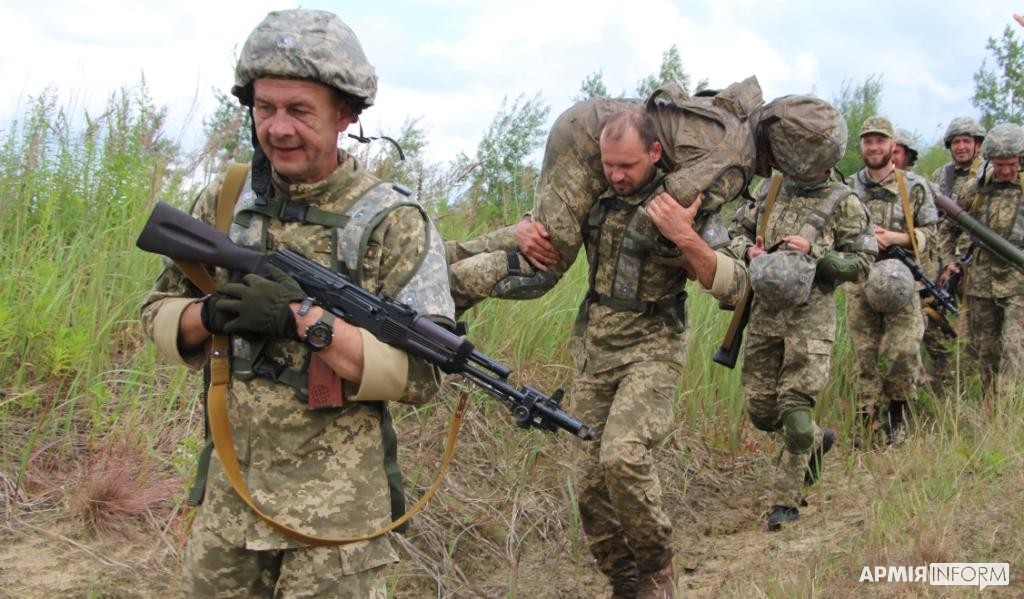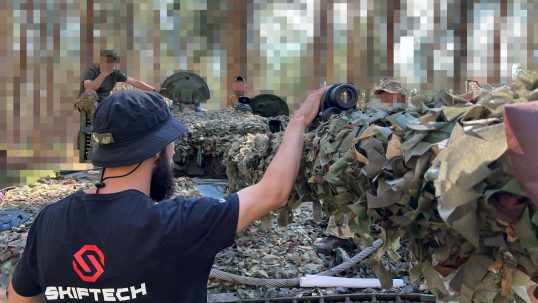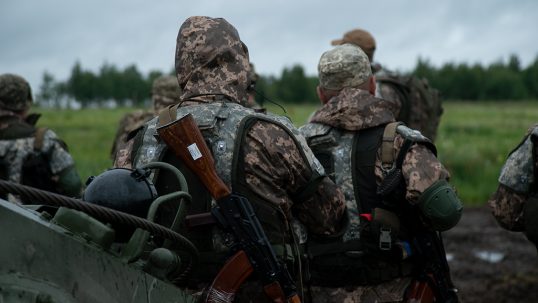
In modern military conflicts, the level of unit preparedness is a decisive factor. Traditional training methods, such as shooting ranges, tactical marches, or command-staff exercises, are undoubtedly important but have certain limitations. One of the most effective ways to enhance combat readiness is tactical simulation training, which allows for the modeling of real combat situations in a safe yet highly realistic environment.
What is Tactical Simulation Training?
Tactical simulation training is a military training method that recreates combat conditions using specialized simulators, software, or laser-based systems. This can range from AI-powered computer simulations to full-scale military training simulators, which replicate real combat scenarios.
Unlike traditional training, tactical simulation allows military personnel to:
✔ Simulate various combat scenarios – from urban warfare to countering sabotage groups.
✔ Safely practice high-risk maneuvers – without endangering soldiers’ lives.
✔ Receive precise real-time feedback – with an analysis of soldiers’ actions during and after training.
✔ Reduce ammunition and equipment costs – by utilizing electronic devices and laser-based combat training systems.
Combat Situation Modeling: The Key to Combat Readiness
1. Simulating Realistic Combat Conditions
In real combat, every second counts. Realistic combat training enables soldiers to operate in conditions as close to real warfare as possible. For example, SKIFTECH’s advanced tactical training systems allow military personnel to experience scenarios such as:
- Enemy fire from cover, forcing soldiers to act quickly and unpredictably.
- Decision-making under enemy fire.
- Coordination with allied forces under limited visibility conditions.
This enhances soldiers’ stress resistance and decision-making skills under pressure.
2. Urban Combat Training
Recent military conflicts have proven that urban combat is significantly more complex than engagements in open terrain. Military simulation allows soldiers to train for scenarios such as:
- Clearing buildings of enemy forces.
- Countering ambushes and sniper attacks.
- Evacuating wounded personnel under enemy fire.
With the use of military training simulators, soldiers can train for these scenarios without the risk of injury.
Detailed Tactical Analysis in Simulation Training
Tactical simulation enables military personnel to develop general combat skills while also perfecting specific battlefield scenarios frequently encountered in modern warfare. Below are three key aspects of urban combat:
Clearing Buildings of Enemy Forces
Objectives:
- Secure a strategic location occupied by enemy forces.
- Clear rooms of hostiles with minimal casualties.
- Maintain control over the building and prevent enemy reoccupation.
Challenges & Risks:
- Limited visibility inside buildings.
- Multiple hiding spots for enemy combatants.
- Possible traps, explosive devices, or mines.
- High risk of friendly fire in confined spaces.
Simulation Training Process:
- Reconnaissance Before Assault
- Use of drones, thermal imaging, or augmented reality systems to analyze building conditions before entry.
- Building Entry
- “Rapid Entry” for surprise assaults before enemies establish a defense.
- “Methodical Clearing” when ambushes or traps are suspected.
- Room-to-Room Combat
- The first group enters and secures key positions.
- The second group provides cover, assesses threats, and clears rooms.
- Flashbang grenades, smoke screens, or laser-based military training simulators are used against resisting enemies.
- Final Sweep & Securing the Area
- All rooms are checked for explosives.
- A security post is established to prevent reoccupation.
Advantages of Tactical Simulation Training:
✔ Repeated drills allow for mastery without real-life risk.
✔ Training analytics systems provide feedback and optimize coordination.
✔ Various conditions (blackouts, smoke, limited visibility) make training highly realistic.
Countering Ambushes & Sniper Attacks
Objectives:
- Detect and neutralize enemy forces executing an ambush.
- Establish covering fire and withdraw from danger.
- Identify and eliminate enemy snipers.
Challenges & Risks:
- Sudden enemy fire causing panic.
- Lack of adequate cover.
- Targeting of key personnel (commanders, medics, specialists).
- Precision sniper fire restricting unit movement.
Simulation Training Process:
- Reacting to an Ambush
- Soldiers learn to quickly assess the direction of enemy fire and take cover.
- Identification of safe retreat routes.
- Use of smoke screens and suppressive fire.
- Sniper Detection
- Terrain analysis—identifying high vantage points, buildings, or elevated areas where snipers may be positioned.
- Training systems simulating laser-based sniper indicators for enhanced detection.
- Neutralizing the Threat
- Counter-sniper teams and suppressive fire techniques.
- Artillery or drone-assisted strikes.
- Maneuvering out of danger under coordinated covering fire.
Advantages of Tactical Simulation Training:
✔ Realistic enemy engagement using laser-based sniper shot simulators.
✔ Strengthened coordination between units and support forces.
✔ Improved ability to remain calm and make rapid decisions under surprise attack.
Evacuating Wounded Personnel Under Fire
Objectives:
- Administer first aid on the battlefield.
- Safely transport the wounded to a secure area.
- Coordinate with medical teams and support units.
Challenges & Risks:
- High risk of continued enemy fire.
- Lack of specialized evacuation transport.
- Terrain difficulties affecting movement.
- Psychological stress impairing decision-making.
Simulation Training Process:
- First Aid & Casualty Assessment
- Training with medical simulators for applying tourniquets, stopping bleeding, and performing intubation.
- Evacuation Planning
- Using vehicles such as armored personnel carriers or medical transport.
- Moving the wounded while under cover.
- Coordinating Medical Evacuation
- Digital systems for calling medical teams.
- Coordinating extraction efforts between unit teams.
Advantages of Tactical Simulation Training:
✔ Repeated scenario-based learning under increasingly complex conditions.
✔ Formation of rapid response reflexes for battlefield medical assistance.
✔ Reduced panic levels and improved performance under critical situations.
3. Reconnaissance & Counter-Sabotage Operations
A critical aspect of modern warfare is reconnaissance and countering enemy special operations forces (SOF). Tactical simulation training enables soldiers to:
- Utilize drones and thermal imaging for enemy detection.
- Set up ambushes and counter-ambush tactics.
- Coordinate with artillery and aviation for enemy neutralization.
GPS-enabled military training simulators track soldier movements and allow for detailed post-training analysis.
4. Team Coordination & Communication
In real combat, chaotic actions lead to unnecessary losses. Tactical simulation training enhances unit coordination by practicing:
- Clear role assignments (commander, scout, sniper, engineer).
- Non-verbal communication signals for low-visibility conditions.
- Tactical maneuvers under enemy fire.
This strengthens unit cohesion and increases battlefield effectiveness.
Why Tactical Simulation Training is Superior to Traditional Methods
- Realism Without Risk – Soldiers experience combat-like conditions without life-threatening danger.
- Objective Error Analysis – Advanced military training simulators record actions for detailed debriefing.
- Scenario Repetition – Units can replay scenarios, correct mistakes, and improve execution.
- Cost Reduction – Tactical simulation saves ammunition and resources, which is crucial in prolonged conflicts.
Tactical simulation training is a powerful tool that enhances combat readiness by replicating real battlefield scenarios. It teaches soldiers to react quickly, operate as a team, and make decisive decisions under pressure.
Modern training systems, including SKIFTECH’s innovations, ensure realistic, resource-efficient training, making military simulation an essential component of every combat unit’s preparation.
Train smart – fight to win!

